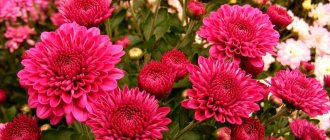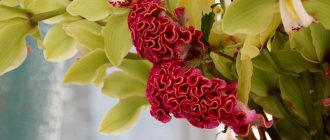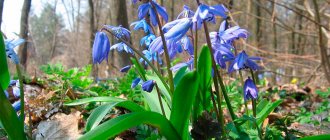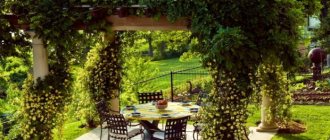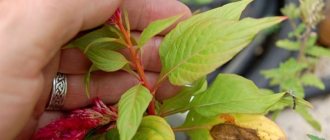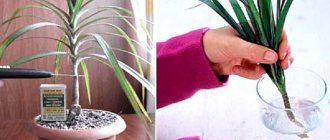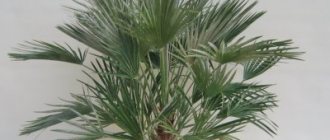These flowers were classified by botanists as belonging to the Chenopodiaceae family, but recently they began to be assigned to the Amaranthaceae family. Translated from Greek, "celosia" is translated as "flaming", which corresponds to the appearance and color of the inflorescences. They really look like flames of different colors.
Under natural conditions, celosia grows in countries with hot climates - on the African and American continents, in the warm regions of Asia. More than 50 species of this flowering plant are found in nature, but only a few varieties are grown in garden plots.
- Celosia spicata (Hutton's)
- Selecting and preparing a seat
Description of the Celosia flower
Celosia is an edible ornamental plant (less commonly a shrub), which in our latitudes is most often grown as an annual crop, since it cannot withstand sub-zero temperatures. The name "Celosia" means "burning" in Greek. The genus consists of about 45 species of herbaceous plants of the amaranth family (Amaranthaceae), native to tropical America and Africa.
Depending on the variety, plants grow to different sizes. Some reach a height of only 30 cm, while others can grow up to one meter or more. Scallops can have straight or branched shoots. The leaves have a lanceolate or ovate configuration.
Flowering of Celosia begins in the summer and often continues to bloom until the onset of autumn cold weather. The inflorescences are comb-shaped, paniculate or spike-shaped, formed from miniature flowers. It is difficult to find a flower with a more interesting shape and structure. The flowers of some varieties of Celosia look like flames, decorating your garden. The color of the inflorescences is quite varied - it can be pinkish, orange, golden, red, scarlet or yellow. The fruit is a multi-seeded capsule.
Types of amazing celosia
When talking about species, you will probably never find a complete description of them - they are so diverse. Few people have encountered a two-meter celosia, the inflorescences of which look like a huge turkey comb hanging down. This giant expels a trunk that resembles a small tree in one summer.
Each species is worthy of a separate book, however, we will try to briefly describe the main types of celosia.
Cockscomb
The scientific name of this species is Celosia silvery comb
. This is a perennial plant, up to 40-45 cm in height, which is cultivated as an annual due to the cold seasons. More variegated decorative varieties have compactly formed bushes up to 35 cm, and the flowers are collected in a large, spectacular comb, like a rooster's. Along the upper edge, these inflorescences can have a very sinuous fringe, like a flirty frill.
The color of the inflorescence can be yellow, orange, pink and deep purple. The leaves of the plant are no less bright - from green to purple, and even dark burgundy.
Varieties of this species with brightly colored leaves and inflorescences:
- – bright red inflorescences and purple leaves;
- – a spectacular plant with red-purple color of flowers, stems and leaves;
- – the leaves of the plant are green, the stem is green-pink, the inflorescences are purple-red.
Bright varieties of scallops
The word silver in the name is not without reason - the inflorescences are not only bright, but also shimmer with silver in the light, just as the leaves of some varieties have a metallic tint. This species can be about 1 meter in height or more, but the most interesting are the dwarfs. This annual blooms until frost
without losing beauty and decorativeness. Unlike scallops, the inflorescences of this celosia are paniculate. The length of the inflorescences is sometimes at least half of the entire plant. The miniature varieties that resemble candles are especially charming.
This variety offers a variety of colors:
- Malyutka
is a dwarf variety sold as a variegated assortment; - Goldfeder
- the golden inflorescences of this species of medium height are charming in their own way; - Foerfeder
is a real flame of passion, a medium-sized plant with bright red inflorescences; - New Look
- highly valued for the silvery tint of its bright burgundy leaves and red panicles; - Geisha
- the range of these elegantly shaped panicles is very rich, which is why they are valuable for pots and small flower beds.
Spike celosia
This species resembles a spikelet, it is also called Hutton's celosia
. The color is very rich and the plant itself is not as flashy as other species, but truly exclusive. Exquisite thin leaves and graceful inflorescences from white to purple will appeal to those who appreciate unusual beauty. Different varieties reach from miniature to a meter in height.
Quote from the message
Cockscomb.
Celosia Celosia, Latin - Celosia.
The name comes from the Greek word 'kelcos' - burning, fiery and is associated with the color of the leaves and flowers. Velvety exotic inflorescences of various celosias look great in the most exquisite flower arrangements, coloring our gardens.
Amazingly beautiful low-growing potted celosias are an elegant decoration for a sunny loggia and balcony.
The genus includes up to 60 species, originating from Southern China, Eastern India, Africa and America.
Celosia paniculata
in Nigeria it has a complex name that translates as “a plant that makes husbands fat and happy.” Its broad leaves are traditionally used as food in West and Central Africa. In Chinese folk medicine, celosia seeds are a valuable medicinal raw material; here, medicinal and health-improving teas are prepared from it.
Cirrus
, or
celosia plumosa
(
Celosia argentea f. plumosa
), is crowned with an inflorescence in the form of a dense or loose, large panicle, reminiscent of either a plume or a miniature fire flame. Maybe it was she who gave the name to the whole species, because translated from Greek the word kelos means “burning”, “blazing.”
Another form, celosia combata
, or
celosia cristata
(
Celosia argentea f. cristata
), is often popularly called “cockscomb”. Its unusual shape of the inflorescence arose as a result of a rather rare phenomenon in botany - fasciation, that is, the growth of the upper part of the peduncle. All its branches have grown together, forming a wide receptacle, winding in the upper part, on which numerous small flowers are located tightly together.
The wild ancestors of this celosia come from Southeast Asia and Africa. It is difficult to say where exactly it came to Europe from: some botanists believe that it came from India, others from Africa. It is known for certain that this happened in the second half of the 16th century, and the plant immediately became very popular among gardeners.
Among the forms and varieties of silver celosia, there are giants up to a meter high with very large inflorescences and dwarfs only 10-20 cm tall, whose inflorescences, gracefully framed by leaves, seem to lie directly on the ground. The flowers of both forms can be light yellow, almost cream, orange, pink, crimson, salmon, red, burgundy. But no matter what colors and shades the inflorescences are painted in, they are always surprisingly bright, burning, as if phosphorescent.
Perennial or mostly annual herbaceous plants with straight, succulent, ribbed stems of green color, often with a red tint, 30-70 cm in height. The leaves are arranged in alternate order, entire, petiolate, smooth, ovate with a pointed end, green, variegated or dark purple. The flowers are small, bisexual, with brightly colored membranous bracts, collected in large, original comb or paniculate inflorescences. The fruit is a round capsule. The seeds are round, shiny, black. There are 700-800 pieces in 1 g, retaining viability for up to 5 years.
Celosia inflorescences are divided into three main groups according to their shape:
- spikelets
- feathery
- comb
The most commonly cultivated plants are celosia cristata and celosia pinnate.
Care
Celosia captivates not only with its beauty, but also with its ease of cultivation. Celosia is easy to grow from seeds. They are sown for seedlings in the first half of April. Seedlings dive into pots, since the plant does not tolerate transplantation into open ground. At the beginning of June, when the threat of frost has passed, the seedlings are planted in a permanent place.
The soil is preferably fertile, loose, structural, non-acidic. It is advisable to choose a place protected from the wind, warm, sunny and without stagnant water
. The distance between plants depends on the variety and ranges from 15 cm for low varieties to 30-35 cm for tall ones. During the initial growth period, good watering is required. Fertilizing with complete mineral fertilizer is done once every 10-15 days. If you overfeed plants with nitrogen and organic matter, they will grow powerful, but will bloom poorly.
Celosia is planted in flower beds, ridges, and borders. It grows well in containers, on balconies and window sills. Blooms from late June until frost.
Reproduction
Reproduction of celosia is not particularly difficult. Celosia is mainly propagated by seeds, since when cuttings the decorative properties of plants are sometimes lost. Celosia seeds are sown for seedlings in March-April under film. Sow rarely on the surface of damp soil. It is advisable to sow celosia directly into separate pots so as not to damage the root system of plants when picking. The first shoots appear after 4-6 days
It is better to buy seeds of a mixture of varieties, and then the variegated, cheerful celosias will color your balcony and garden for a very long time - all summer and the warm part of autumn.
Celosia seedlings are grown at moderate room temperature (17-20 ° C), with good lighting and ventilation
.
The main thing is moderate and careful watering. It is important not to dry out the soil or overwater young plants, since the roots of celosia seedlings easily rot from excessively wet soil. Celosia seedlings should be grown in a bright window, protected from the hot sun.
Transplantation of grown and acclimatized plants into open ground is carried out only after the end of the spring cold season. After all, celosia is very thermophilic and does not tolerate even the slightest frost!
Between dwarf varieties, the distance between plants is 10-15 cm; larger plants are planted every 20-30 cm.
The best place to plant celosia in the garden is sunny, protected from cold winds. The soil is desirable to be loose, slightly acidic, and well-drained.
Fertilizing celosia with mineral fertilizers is carried out once a month. Celosias respond very well to fertilization with lush flowering.
On hot and dry days, abundant watering of celosias is necessary, otherwise they droop their leaves and do not form new flower stalks.
Note for lovers of dried flowers and compilers of winter bouquets: celosia is perfect for floral arrangements!
Celosia inflorescences perfectly retain their “foppish” shape and model-like appearance for a long time. They do not lose color if they are cut before the seeds begin to ripen and well dried in a dark, cool room for two weeks.
4. Varieties and types
Silver comb celosia (Celosia argentea), or Cockscomb.
Perennial up to 45 cm high, cultivated as an annual. Elegant varieties have a compact bush, reaching a height of 20-35 cm. Small flowers of comb celosia are collected in a spectacular massive inflorescence with convolutions along the upper edge. The shape of the inflorescence resembles a cockscomb.
The color of comb celosia flowers can be yellow, pink, orange, purple-red. Such bright colors and unusual shapes of inflorescences are rarely found among other plants.
Therefore, a flower bed with comb celosia invariably attracts admiring glances.
Comb celosia blooms from July to October
.
However, the decorative properties of plants are not lost after flowering. After all, the leaves of various varieties of comb celosia are not only green, but also dark red, burgundy, purple, bronze, and golden.
Variety " Impress
"has a red inflorescence and purple leaves.
The variety " Imperialis"
"(20-25 cm high) beautiful dark red shoots, purple leaves with red veins, dark purple inflorescences.
Variety " Atropurpurea"
» the same height, has a pinkish stem with light green leaves; large inflorescences are purple-red.
Comb celosia is used for planting in flower beds, ridges, flowerpots and as a summer potted crop. This ornamental plant also looks great in combination with other annuals.
Silver feathery celosia (Celosia argentea).
An annual plant up to a meter high.
Cirrus celosia blooms for a long time and luxuriantly for many months, without losing its decorative effect until the autumn frosts.
Spectacular varieties of pinnate celosia form a compact bush with bright paniculate inflorescences. The length of the inflorescences is usually half or a third of the height of the plant. Dwarf (20-30 cm), medium-sized (30-50 cm) and tall varieties (50-90 cm) have been bred.
The colors of the stems, leaves and inflorescences of pinnate celosia are very diverse.
Dwarf mix " Geisha
"(height 20-25 cm) forms charming panicles of inflorescences in a rich range of colors. This luxurious mixture is very good for potting.
Another dwarf multi-colored mixture - “ Malyutka”
»
Variety " Goldfeder"
"(height 25-30 cm) decorates the balcony and garden with paniculate golden-yellow inflorescences, as if emitting light.
Variety " Feuerfeder"
"(height 35 cm) has greenish-pink shoots and light leaves with pink veins, the inflorescence is bright red.
Variety " New Look
"(height 35-40 cm) amazes with the contrast of purple-violet foliage with a metallic tint and scarlet panicles.
Variety " Golden Flitz"
"(height 80 cm) forms a golden-orange inflorescence against the background of light green leaves.
Variety " Tomsoni Magnifica"
"(height 60-80 cm) has greenish-pink stems and leaves, pyramidal inflorescences are burgundy.
Celosia pinnate is used in flower beds, groups, for single plantings and for bouquets. Dwarf species are used for growing in pots and for decorating a sunny balcony.
Celosia spicata.
Spikelet celosias are less popular among gardeners, but in vain!
The inflorescences of plants in this group are very similar in appearance to ears of wheat - hence the name.
The color of the flowers of spikelet celosias is also varied - from white to purple. Bright, showy inflorescences go well with narrow green leaves.
Depending on the variety, plant height ranges from 20 cm to 1.20 m. By the way, it is the spikelet group of celosias that is the ancestor of garden forms.
Celosias are valued for the originality of their bright inflorescences and decorative leaves. Good in containers and flowerpots. Recommended for flower beds, flowerbeds, vases, dry bouquets.
Celosia is a heat-loving plant that does not tolerate even the slightest frost, so it is grown in seedlings. Seeds are sown in containers at the beginning of April; sprouts appear on days 4-5 at a temperature of +23°C. Seedlings grow strong in good light, but they must be protected from direct sunlight. With a lack of light, the seedlings will be frail and elongated, which will have a bad effect on flowering, so additional lighting is recommended.
Moderate watering is required; if over-watered, the roots may rot or the seedlings may be affected by blackleg. To prevent this from happening, loosen the soil more often and sprinkle the surface with wood ash. Grown seedlings need to be thinned out.
How to grow Celosia in the garden
These flowers are fairly easy to care for, but the Scallop has a few special requirements. We recommend checking out our complete planting and care guide to help you grow your own Celosia plant.
You can buy seedlings of the flower at your local nursery or garden center, but it is also easy to grow from seeds.
Sowing Celosia seeds indoors for seedlings
The best method for growing Scallops from seed is to sow seedlings indoors about 6-8 weeks before the last average spring frost date.
Here's what you'll need:
- Celosia Seeds
- Container for seedlings or peat pots
- Good quality soil mixture for seedlings
- Artificial lighting or a well-lit window
- Warming mat (optional)
The process of planting Celosia seeds for seedlings is as follows:
- Moisten the soil, but do not oversaturate it with moisture. By squeezing a lump of soil with your hand, it should not fall apart, but water should not flow from it.
- The seeds can be pre-soaked for several hours.
- Fill trays or peat pots with moist soil mixture and sow seeds on top of the soil, one per cell or pot. Celosia seeds need light to germinate, so you should either just press them lightly into the soil or barely cover them with a small amount of soil.
- Place trays or pots in daylight. This could be a window that gets a lot of sunlight, or lighting for plants.
Seeds germinate best at a temperature of 20-26 °C. If your home tends to be cool in the winter, a heating mat can help to warm up the container from below. Keep the soil moist during the germination period. You can cover the trays with plastic lids or plastic wrap to retain moisture. Germination should occur in 1-2 weeks. Once you have seedlings, thin out the weakest ones, leaving only the strongest seedlings for planting outside.
Once your seeds have sprouted, remove the lid and it is advisable to increase the amount of light received. Water the seedlings and give them good ventilation while they sprout. Harden off the seedlings about 2 weeks before transplanting them into the garden.
Growing seedlings
To ensure that cockscombs begin to bloom earlier, it is better to grow them as seedlings. Propagation by cuttings is possible, but in this case the flower loses its decorative appearance.
When using method 1, you must adhere to the following rules:
- Seeds should be sown in March - April. You can buy them or assemble them yourself.
- Before this event, the seed material must be kept in a warm solution of potassium permanganate for 2-3 hours.
Celosia comb or cockscomb - photo - The soil used for planting must be well moistened. It is better to use a mixture purchased in a special store.
- When planting, the seeds should be placed at a distance of 2 cm from each other.
- They need to be lightly pressed into the planting soil.
- Containers with seedlings should be covered with transparent film and placed in a warm room.
- When seedlings appear (5-7 days after planting), the film must be removed and the seedlings placed in the sun.
- Plants require moderate but regular watering.
If there is little light in the room, it is better to install lighting.
After 2 true leaves appear, you can start picking into peat or plastic glasses. If the plants are very elongated, then when performing this procedure the stem should be immersed in the ground up to the leaves. It will become shorter, but stronger. The root system will be more powerful.
Advice! You can plant the seeds directly in cups to avoid diving.
Thus, growing seedlings is not difficult. You just need to follow the experience accumulated by gardeners.
Expert opinion
Yulia Yurievna
I have a large garden and vegetable garden, several greenhouses. I love modern methods of cultivating plants and mulching the soil, and I share my experience.
Ask a Question
Regardless of whether the soil is prepared yourself or purchased, it is better to disinfect it. This can be done by calcining the substrate in the oven or by pouring boiling water over the soil. During germination under film, we recommend ventilating the seedlings daily. After sowing and picking the plants, it is better to water them with a weak solution of manganese. This will protect the flowers from fungal infection. Before transplanting flowers into open ground, cockscomb flowers must be hardened off. To do this, containers with seedlings need to be taken out into the garden, having first chosen a place protected from the wind with diffused light. At first, the plants are left outside for no more than 2 hours, increasing the duration of walks over time.
Planting Celosia seedlings or seedlings in the garden
What you need to know when planting Scallop in a flower garden.
When to plant
Celosia is sensitive to cold, so wait until all frosts have passed in the spring. This also applies to direct sowing of seeds. Be careful as this is a heat-loving plant. Wait until the soil has time to warm up. Typically, seedlings are planted in early to mid-May in colder climates and April in warmer regions.
Where to plant Celosia: choosing a place
You can grow the flower in open ground or in containers. Scallops are equally good in both cases, but if you plan to use containers, it is advisable to choose varieties with shorter stems.
Celosia loves sun and warmth, so find a place where the flower will receive enough sunlight. These plants need at least eight hours of sunlight every day.
What soil is suitable for growing scallops?
The flower is drought tolerant, but does not like stagnant water, so make sure your planting site has good drainage. It's the same with pots. Use a good quality potting mix that drains well, and make sure your pots have drainage holes in the bottom.
If you have clay soil on your site, it is best to mix it with perlite or coarse sand before planting the seedlings. It will be better if you add some nutrients to the soil. Add compost before planting to add organic matter to the soil.
Planting Scallop seedlings
Celosia can be planted just like any other seedling. Once you've prepared your flower bed or container, simply dig holes that are roughly the same size at the root balls of your plants. Make sure the soil is well warmed up before planting Celosia.
If you grew your seedlings in peat pots, you can plant the seedlings in them, but tear off the bottom of the container so the roots have somewhere to grow. Otherwise, carefully remove each seedling from the pot and insert it into one of the holes. Cover each seedling with soil so that the top of the root ball is covered with soil. Lightly tamp them down with your hands to prevent them from falling.
The last step is to water the planting area well. To prevent weed roots from killing your seedlings, when planting your seedlings, apply a few inches of organic mulch around the seedling to prevent weeds from germinating.
Celosia propagation
Of course, it is worth mentioning a little about how celosia reproduces, and how you can get a lot of annuals, preserving the maternal traits and characteristics in them. In order to obtain strong and viable planting material, in the autumn it is recommended to cut off several inflorescences that have already withered. They are dried in a dark, cool place so that they do not begin to actively rot. After this, the inflorescences should be shaken out over a white sheet of paper so that the finished seeds spill out onto it and are visible. These seeds are then placed in tightly closed containers, and then sent in this form directly to the refrigerator.
Around April, the seeds will be completely ready to be planted. But before that, they should be further processed, and the gardener can be helped with this by some professional preparations that are specifically designed for these purposes - these are zircon or epin. A little ordinary water is taken into a glass, and a few drops of these drugs are dissolved in it. The seed material is sent into a container with the drug for about four hours. It is also worth treating both the seeds and the soil with a concentrate based on potassium permanganate to disinfect them. In addition, potassium permanganate perfectly strengthens plantings, enhances their immunity and stress resistance. In a container, several grooves should be made directly in the soil, but you can also simply loosen the top layer of soil and place the seeds without deepening them.
If we talk about the composition of the soil, then soil containing humus and vermiculite is perfect for celosia; you can also add just a little clean sand so that the soil is looser and allows air and moisture to pass through. The seeds should not be sprinkled with soil on top, but you can press them slightly onto the soil and sprinkle water on top using a spray bottle. Next, the container with the seeds is covered with polyethylene or glass, and it is also placed in the warmest part of the room; a window sill is recommended, which will also be well lit. At the same time, in the apartment or room where the container is located, the air temperature should not be lower than 25 degrees. Sometimes glass or plastic film must be lifted to ventilate the seedlings and to prevent rot and mustiness from appearing.
It should take from ten to fourteen days until the very first shoots appear. When about two leaves appear on each sprout, the sprouts can be picked off. Each sprout is sent to a separate container filled with the same soil composition in which the plants sprouted. When the plant becomes large enough and strong enough, they can be sent to separate containers, and minerals can be added so that the plant does not stop its growth and quickly takes root in a permanent container or in a permanent place. In the next part of this article we will dwell in more detail on the intricacies of planting celosia, as well as on some features that will help the gardener carry out the planting procedure in such a way that the plant shows maximum decorativeness and significance in the conditions of a personal plot or in conditions of growth in indoor, home conditions . Considering all these points, even
an inexperienced gardener will be able to plant in such a way that the plant receives maximum benefit, care and gives back its incredible appearance.
Sowing Celosia seeds in open ground
You can grow Scallop by sowing the seeds directly in the flower bed. This method has its pros and cons.
Celosia seedlings do not always tolerate transplantation, so sowing seeds directly into the ground avoids this problem. However, if you live in more northern regions and don't have a long growing season and your plants will take a while to flower - you may miss out on most of their flowering time.
If you live in a milder climate with a long season, starting your seeds outdoors is your best option. Celosia usually begins to bloom in mid to late summer. The flowering period will take longer if you decide to plant the plants from seeds outdoors in the spring.
The process of sowing in open ground is as follows:
- Preparing the site. Get rid of rocks, weeds and debris. Mix compost or manure into the soil to increase nutrient levels at the planting site.
- Level the surface of the soil until it is relatively smooth.
- Plant Celosia seeds up to 3cm deep and barely cover them with soil. Remember that they will need light to germinate.
- Water the newly seeded area well and keep it moist while the seeds germinate. Once the seedlings appear, allow them to grow for a week or two. Then, if necessary, you can plant them in the right places.
Cockscomb flowers - types and varieties
Cockscombs are beautiful, vibrant flowers. Despite the consonance of the names, these are not cockerel flowers, which are otherwise called irises. They are completely different and belong to different families. Cockerel flowers belong to the Iris or Iris family, and celosia comb belongs to the Amaranth family. Based on the shape of the inflorescences, cockscombs are divided into several groups. These are comb, pinnate, spikelet. The most common species are considered to be comb and pinnate celosia. The silvery variety of comb celosia is often cultivated as an annual. Although by nature it is a perennial plant. The height of the bush reaches 50-100 cm. There are oval or elongated leaves along the entire length of the stem. Flowering begins in mid-summer. The comb variety of this plant has straight, powerful, succulent stems that rarely reach a height of more than half a meter. The leaves are light, the inflorescences are round or umbrella-shaped. They are made up of small fluffy buds. Arranged in sinuous lines with fringe at the ends. The buds are bright red, burgundy or fiery. Flowering begins in July and with good care continues until mid-autumn. One of the brightest representatives of this group is Atropurpurea. The height of the variety is about 20 cm, the stem has a burgundy tint, the foliage is light, and the inflorescences are lush and purple. Another bright representative is Impress. A characteristic feature is that not only the buds, but also the stem and leaves are distinguished by a red hue. Paniculate species come in different heights: from 25 cm to 1 m. The shoots are straight and have gray-green leaves. Towards mid-summer, tall panicle-like buds appear. They come in pink, red, yellow or fiery. One of the most prominent representatives is Golden Flitz. The plant reaches 70-80 cm and has bright orange inflorescences. Goldfeder is a low-growing variety with golden buds. New Look is distinguished by the original purple color of the foliage and stem. At the same time, the inflorescences of the bush are honey-colored. Spikelet types of cockscombs grow a little more than a meter and look more delicate. Their buds look like spikelets. The most common shades are yellow and orange. Flowering begins from the lower part of the inflorescence, which becomes lighter.
Further care for the Celosia flower
The scallop is not a capricious plant and requires a lot of attention. You just need to follow some procedures described below.
Watering
Established plants are drought tolerant, but you will need to water the seedlings regularly until they are established. Water mature Celosia when the top layer of soil dries out. Always check the soil first to see if the flower needs watering. Never allow moisture to stagnate, as Scallop is prone to root rot, which will quickly kill the plant. Water once or twice a week in summer. Seedlings need more water than mature plants.
You might be interested
List of the best applications for identifying plants from photos
List of the best blue flowers and plants with blue foliage
Anafalis - an original garden decoration
Fertilizer
In most cases, Celosia does not need to be fertilized, but you can apply a balanced fertilizer about once a month if you want the plants to look fuller.
You can add a layer of mulch around your flowers to keep them looking nice and to suppress weeds, but don't overdo it. Soil that is too wet will cause rot.
Celosia pruning
To give the plant shape, pinch off its longer stems. Remove leaves that look unhealthy or have dried out. Do not pick the leaves; cut them off with sharp garden shears. Also be sure to remove dead flowers as this will encourage new buds to grow. Broken stems should be cut below the break point. Never leave damaged stems on Celosia, as this can lead to disease. Taller varieties of Celosia may need staking, especially if you often experience strong winds.
Celosia after flowering
When celosia fades, you need to prepare it for wintering.
Collecting seeds
The process of obtaining seeds is probably the simplest in comparison with other plants. To do this, it is necessary to pick several already faded inflorescences, which are already beginning to die. Then they need to be placed in some vessel, vase, in a dark place for a day, where they will finally fade. Then remove from the container and gently shake over some surface or coating. The seeds will begin to fall out on their own. They need to be blown out, then put into a box for further storage. It is also possible to simplify this process; to do this, you need to hang the inflorescences so that they look down, and lay a sheet of newspaper under them. As soon as they wither, the seeds themselves will gradually begin to crumble, all that remains is to collect them.
Celosia in winter
Due to weather conditions that are not very suitable for this plant, all its species are grown as annuals. In the fall, the remaining specimens are usually disposed of and destroyed. But you can not only just throw them away, you can make beautiful dry bouquets out of them. To make this, only tall varieties are suitable.
Faded specimens are trimmed, all leaves are removed, and then brought indoors. There the inflorescences will finally fade, after which they can be placed in an empty vase, without water.
Pests and diseases
Celosias are generally hardy but susceptible to fungal diseases. Check regularly for damaged areas on the leaves that appear as brown spots. Trim off affected leaves to prevent the fungus from spreading to the rest of the plant. Grayish-black spots on the stems may indicate root rot. Ventilate Celosia plants generously and make sure they are in an area that receives plenty of sunlight. If you keep the flower indoors, it may attract mites that feed on the sap of the leaves. To control mites, lightly spray the leaves with a mixture of one teaspoon of mild dishwashing liquid in one liter of water.
Plants that do not have time to grow stronger may become infected with blackleg.
Photo of seedling damage by “black leg”
This disease can be prevented by watering only in the morning (before 9:00 am). In cloudy times, it is not recommended to moisturize. If disease damage is detected, the soil should be thoroughly loosened and then sprinkled with wood ash, watering should be significantly reduced.
Pests
If we talk about pests, aphids are most often found on celosia. It appears mainly in areas where there are a large number of ant colonies. Therefore, if a gardener decides to fight aphids, then he should take measures for a more comprehensive fight against ants. You can scatter semolina to prevent ants in the area, and sometimes the anthills are destroyed by the grower himself, and he does it manually. At first, aphids can be easily washed off; it is enough to treat the leaves with a soap solution, but if suddenly the aphids have spread and multiplied too much, then only insecticidal preparations, which are specifically intended for this purpose and to combat pests and insects, will help. In addition to the fact that the plant is eaten by aphids, mole crickets love to feast on it. These creatures generally position themselves as omnivores, but what they like best is to damage roots by feeding on root sap. Because of this, the plant begins to wither very quickly and, as a result, these processes cause the death of the plant. Mole crickets love to live underground, sometimes they come to the surface, but you can meet them occasionally. Mole crickets are destroyed using the same effective insecticides, which are poured directly into the soil along with water. Also, some gardeners recommend scattering sweet corn sticks around the area, which are pre-loaded with poison against these insects. In addition, along the edges of the flower bed where celosia is located, you can plant fragrant marigolds, as this will serve as an excellent preventive measure against mole crickets.
Celosia flower in garden landscape design
The comb looks great in combination with decorative stones or small shrubs. Often the flower becomes an addition to voluminous flower beds and ridges.
Low-growing varieties are used in the formation of flower beds, carpets, for growing in hanging flower pots and balcony containers. Scallops can be planted either individually or in group compositions. Their celosias form beautiful bouquets; they are able to delight for a long time with their beautiful appearance.
In some countries, the plant is used for medicinal purposes - to combat vision problems and oral pathologies. In China, it is grown to make healing tea.
Planting and caring for “scallops”
“Scallops” are planted in a permanent place in June, when the threat of frost has passed, you can navigate by folk wisdom - when the fluff flies from the poplars, there will be no frost.
Celosia does not tolerate transplantation well, so as not to disturb it again, you can simply place the containers with seedlings in the flowerbed. Give the flowers a sunny place with fertile, loose, low-acid soil. It is prepared in the fall - they dig it up, apply complex fertilizer - 200 g per 1 sq. m. meter, if the soil is heavy, add sand at the rate of 20 kg per 1 sq. m. When planting, carefully remove the seedlings from the container, along with the earthen lump. Place the plants in the prepared holes, water them abundantly, cover them with soil and compact them. Plants are planted at a distance of 15 cm−20 cm (short varieties) and 30 cm−35 cm (high varieties).
After transplantation, the “cockscomb” needs regular watering and loosening. Feed with mineral fertilizers every 10-15 days. Nitrogen and organic fertilizers lead to powerful growth of stems and foliage, but reduce flowering. With proper care, the “comb” blooms from July to October.
Small flowers are collected in spectacular massive inflorescences, painted in yellow, red, and orange colors. Leaves of different shades also make the plant decorative: dark red, bronze, purple. An exotic, bright plant will decorate any flower garden. Tall specimens will look great in the center of a flower bed; they combine well with other annuals. Dwarf species are used in border design.
Flowers are good not only in a flower bed; they are suitable for winter bouquets; cut before the seeds begin to ripen and dried in a dark room, they retain their rich color and shape for a long time.
You will often find celosia here as a houseplant, since it can live and develop at temperatures not lower than 14 degrees Celsius. Its inflorescences, similar to cockscombs, cannot be served at the table, but the young leaves are eaten in many countries.
Genus Celosia
Plants of the genus Celosia are valued for their original flowers, which have chosen two elegant colors: red and yellow.
They, like perky cockerels, ready to break loose and enter into battle at any moment, proudly sit on peduncles or in the axils of green leaves. There is so much charm and brightness in a small plant that it is impossible to remain indifferent to the creation of nature. In its homeland, in the tropics, the plant can live in one place for many years. But, in our harsh regions, Celosia is grown as an annual plant. This adds magnetism and popularity to the flower, without intimidating the time spent caring for the plant. The result is worth it.
Two annual popular species
Of the more than sixty species of celosia, two annual herbaceous species came to our yard.
Both species have the adjective “silver” in their names, and the different shapes of the flowers add one more adjective to each species: “combed” and “pinnate.” Celosia silver comb
Silver comb celosia (Celosia argentea f. cristata), affectionately called “Cockscomb” in Russia, forms a bush of half-meter stems. The stems are covered with green or bronze broadly lanceolate leaves.
Throughout the summer season, if you plant celosia in open ground, protecting it from bad weather, the plant will delight you with its bright, amazing inflorescences. Yellow, purple, red, salmon small flowers, collected in dense inflorescences on a peduncle, to which nature has given the shape of a cockscomb, are unique and irresistible.
For growing in pots, low-growing forms have been bred, the height of the bushes not exceeding a quarter of a meter.
Celosia silvery pinnate
Silver pinnate celosia (Celosia argentea f. plumose) is otherwise called “Cirrus amaranth”. Indeed, with a quick glance at the inflorescences of celosia pinnate and amaranth, which we call “Shchiritsa”, we can conclude that this is the same plant. But this is only at a quick glance. Meticulous botanists see much more sharply, and therefore planted these plants on different shelves.
Let me remind you that quite recently scientists put Shchiritsa on the pedestal of the Panacea for diseases and world hunger. Its reserves of substances useful to humans amaze the imagination, and its fairly simple care during cultivation attracts more and more people who want to grow agaric in their gardens.
But, let's return to celosia pinnate. The height of its bushes, as a rule, is 30-40 centimeters, but there are also tall varieties that follow the example of acorn grass and grow to meter heights.
The green leaves of Celosia silvery pinnate are lanceolate or ovate in shape. Large panicle inflorescences, delighting with bright colors, do not leave the flower stalks from June to August.
Growing
We select a place for the tropical plant that is illuminated, but not under the sizzling rays of the hot summer sun.
We do not forget that celosia loves warmth, and therefore we plant it only after all the belated attacks of frost have been exhausted. Or we take protective measures.
You should not overdo it with watering, resorting more often to spraying that does not affect the inflorescences.
Reproduction
Propagated through seedlings, sowing seeds in February.
The grown seedlings are planted in personal pots. In areas with a mild climate, seeds are sown immediately in open ground.
Varieties of Celosia
In nature, there are up to 45 species of Scallop, and the varietal diversity is even greater. The most popular types:
Silver Celosia (Celosia argentea)
There are also other names for this species - Celosia comb or pinnate. The height of the stem is up to 65 cm, miniature flowers create voluminous fluffy inflorescences.
The color is different - yellow, scarlet, red with purple hues. It is distinguished by a long riot of buds - from the first half of July to October. The most famous variety is “Impress”. The characteristic difference is a rich burgundy hue, dark purple leaves.
Varieties of celosia comb
Photos of comb celosia in a flowerbed demonstrate the diversity of annual varieties. You can name several of the most popular types.
Impress
The dwarf variety grows to only 25 cm above the ground. The leaves of the plant are dark, with red veins, and the inflorescences are wine-red or deep burgundy.
Celosia Impress blooms in mid-June
Empress
The popular variety produces deep purple inflorescences with a crimson tint. The decorative effect is enhanced by beautiful purple-green leaves. The variety is unpretentious and tolerates mild drought and lack of sun.
Celosia Empress grows to an average of 30 cm
Atropurpurea
A miniature variety with light green leaves and a dark stem blooms with burgundy-crimson inflorescences. The panicles are quite large and look bright in the garden, despite the compact size of the annual.
Attention! Celosia Atropurpurea can be grown not only in open soil, but also in pots.
The height of celosia Atropurpurea does not exceed 20 cm
Coral Garden
The medium-sized variety reaches about 50 cm above the ground. Bears relatively small but spectacular panicles of pink-crimson or red-orange hue.
The Coral Garden variety develops well on light soils and is suitable for alpine hills
Facts about celosium
- Since ancient times, silver celosia has been used as a food plant in Indonesia, India, Nigeria, and Central America. Celosia's young leaves and shoots are edible.
- Celosium oil is extracted from scallop seeds.
- In folk medicine, celosia is used to expel worms, to treat blood diseases, mouth ulcers, and vision problems.
- Silver celosia (lat. Celosia argentea) is actively grown as a garden ornamental plant (usually as an annual used for organizing borders), as a cutting plant, and also as a potted plant.
- Silver celosia was introduced into cultivation during the Renaissance, so it has long become a common plant for European gardens.
- Varieties of silver celosia are divided into two groups: the Plumosa group includes varieties with inflorescences in the form of a plume of small deformed flowers of various colors (plants of this group are grown for cutting); to the Cristata group - varieties with inflorescences in the form of wavy ridges of fused shoots.
Celosia - colorful cockerel comb: growing, planting, care
Celosia is an unpretentious flower from the Amaranthaceae family, a perennial plant grown as an annual.
Silver celosia is the best decoration for flower beds and edgings of your garden. Celosia is also grown in pots and flowerpots at home. The homeland of silver celosia is hot Africa, Asia and South America. Over 60 species of celosia are known, but the most commonly grown species in gardens, greenhouses and indoor gardens are silver comb celosia and spikelet celosia (Hutton's celosia).
Hundreds of celosia varieties bred by breeders around the world will not let you get bored with the monotony. In this article I will give examples of just a few varieties of celosia that are most often sold in stores. You can try exotic varieties of celosia yourself if you like growing it.
By the way, people don’t know the scientific name of silver celosia - they simply say: cockscomb or cockerel. Rarely does a gardener ask for celosia in a store, and even the sellers know that a cockerel or comb is celosia. Therefore, it’s enough to remember “cockerel flower” for yourself and it’s in the bag - you can go get the seeds.
Yellow celosia inflorescences look spectacular in any environment. Pictured is Celosia cristata. Source: Wikipedia
Scallops bloom from early July until the first frost and set seeds abundantly, but the seeds do not fully ripen.

